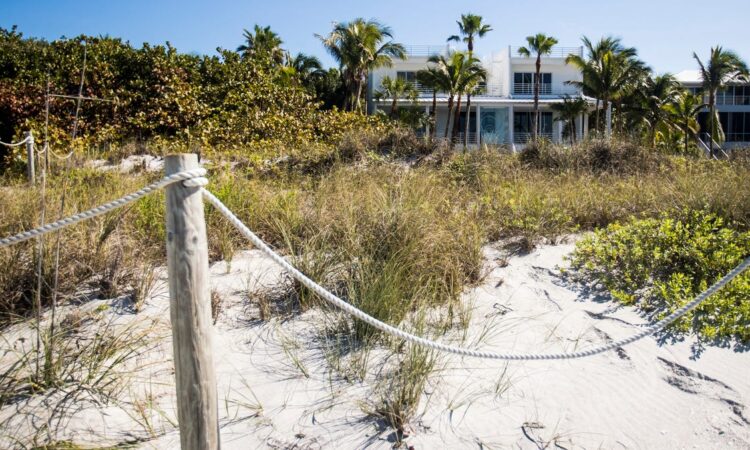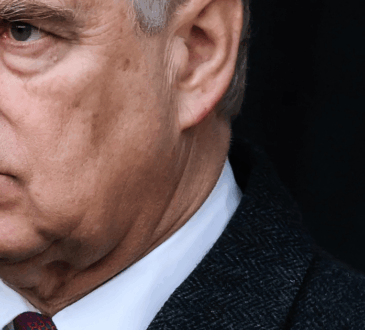
Hurricane Milton storm surge leaves Captiva Island covered in sand,
Hurricane Milton storm surge leaves Captiva Island covered in sand and some flooded streets on Sanibel
- The Robert Rauschenberg Foundation is selling the late artist’s Captiva Island property due to high maintenance costs and environmental risks.
- The sale will end the Rauschenberg Residency program, which has hosted over 500 artists since 2012, in August 2026.
- Funds from the sale will be redirected to support artists and institutions in their own communities.
The New York foundation that owns late art icon Robert Rauschenberg’s Captiva Island property plans to sell the place and end its longtime artists residency program there.
The announcement comes as many worldwide events and exhibits prepare to celebrate what would have been Rauschenberg’s 100th birthday in October.
Maintaining the property just got too expensive, according to the Aug. 27 statement posted on the Robert Rauschenberg Foundation’s website. The board of director’s decision followed a multi-year study.
“In recent years, the Foundation has dedicated significant resources to address increasingly challenging environmental conditions, including recurring storm damage, broader climate risks and rising maintenance costs,” the statement says. “A sustainability assessment confirmed that safeguarding the property would require substantial additional investment and site modifications, without ensuring the property’s long-term resilience or reducing the likelihood of future costs.”
The property includes Rauschenberg’s first home on Captiva, known as the “Beach House,” an art studio and several other houses and cottages. It doesn’t include Rauschenberg’s newer home next door on Laika Lane, which sold for $4.25 million in 2020.
Foundation executive director Courtney J. Martin declined to comment through the foundation’s publicist, Gil Harris of New York public-relations company Sutton. Harris referred The News-Press/Naples Daily News to the online statement.
Robert Rauschenberg: Art icon lived, worked on Captiva Island
Robert Rauschenberg moved to Captiva Island in 1970 and lived there until his death in 2008. He was 82 years old.
At the time, Rauschenberg was considered by many to be the world’s greatest living artist. His work often sold for millions of dollars.
The influential artist became famous in the 1950s for his “combines,” art pieces that combined sculpture and painting using found objects. His most famous combine, “Monogram,” was made from a taxidermied, long-haired goat wearing a car tire.
Rauschenberg was deeply involved in the Southwest Florida community. He donated art every year to the annual Arts for ACT auction. The art gallery at Florida SouthWestern State College is named after him and is celebrating Rauschenberg’s upcoming Oct. 22 birthday with several art exhibits and other events.
Rauschenberg Residency program ending in August 2026
After Rauschenberg’s death, his Captiva compound was reborn in 2012 as a haven for playwrights, painters and other artists. The artists residency program attracted artists from around the world to live and work on the 26-acre property, painting or writing or sculpting as they share ideas and attempt to make artistic breakthroughs.
More than 500 artists have gone through the residency program since it started, the foundation’s statement says. “We are truly grateful to all who have contributed to the Residency over the years. It has been a place where ideas were shared, friendships formed, and new work imagined. The spirit of Captiva will remain a lasting part of the Foundation’s story.”
The foundation’s board will end the Rauschenberg Residency at Captiva in August 2026, according to the statement. It’s unclear when the property will be sold.
“We remain steadfast in our commitment to carrying forward the spirit of creativity and community that Captiva nurtured,” the statement says, “and will continue to build on Rauschenberg’s ethos of experimentation and reinvention through new forms of artistic support.”
The foundation also promised to work to maintain the integrity of the property’s “Fish House,” a 1942 waterfront home once owned by Pulitzer Prize-winning cartoonist and environmentalist Jay Norwood “Ding” Darling.
“As stewards of Rauschenberg’s legacy, the Foundation has a responsibility to allocate its resources in ways that sustain a wide range of mission-driven programs, both now and in the future,” the statement says. “We recognize it may be difficult to reconcile this responsibility with the deep significance Captiva holds for so many, including the local community.
“At the same time, redirecting funds currently allocated to Captiva’s upkeep, together with proceeds from its sale, will allow us to invest more intentionally in programs that support artists and institutions in communities where they live and work.”
Statement from Robert Rauschenberg Foundation
Here is the full statement from the Robert Rauschenberg Foundation:
To our friends and community,
Robert Rauschenberg believed that change was essential to creativity— that crossing boundaries and embracing the unknown could open new possibilities. That belief continues to drive forward our mission at the Foundation to support artists with care, flexibility and purpose.
Following a multi-year study and after careful consideration, the Foundation’s Board of Directors has reached the decision to sell its property in Captiva, home to the Rauschenberg Residency. In recent years, the Foundation has dedicated significant resources to address increasingly challenging environmental conditions, including recurring storm damage, broader climate risks, and rising maintenance costs. A sustainability assessment confirmed that safeguarding the property would require substantial additional investment and site modifications, without ensuring the property’s long-term resilience or reducing the likelihood of future costs.
As stewards of Rauschenberg’s legacy, the Foundation has a responsibility to allocate its resources in ways that sustain a wide range of mission-driven programs, both now and in the future. We recognize it may be difficult to reconcile this responsibility with the deep significance Captiva holds for so many, including the local community. At the same time, redirecting funds currently allocated to Captiva’s upkeep, together with proceeds from its sale, will allow us to invest more intentionally in programs that support artists and institutions in communities where they live and work.
As part of this transition, the Board will conclude the Rauschenberg Residency at Captiva in August 2026. Until then, the program will remain active and operational, welcoming artists through its final year and completing all planned residencies. The Foundation will also continue to operate its Archives Research Residency program at its New York headquarters at 381 Lafayette Street. Additionally, we will work to maintain the integrity of the Fish House, the Captiva property’s historic 1942 waterfront home.
With more than 500 residency alumni, Captiva has played a vital role in shaping the Foundation’s identity and impact. We are truly grateful to all who have contributed to the Residency over the years. It has been a place where ideas were shared, friendships formed, and new work imagined. The spirit of Captiva will remain a lasting part of the Foundation’s story. We remain steadfast in our commitment to carrying forward the spirit of creativity and community that Captiva nurtured, and will continue to build on Rauschenberg’s ethos of experimentation and reinvention through new forms of artistic support.
With appreciation,
Courtney J. Martin Executive Director
Peter Kraus Chairman, Board of Directors
Christopher RauschenbergPresident, Board of Directors
Charles Runnells is an arts and entertainment reporter for The News-Press and the Naples Daily News. To reach him, call 239-335-0368 or email crunnells@gannett.com. Follow or message him on social media: Facebook(@charles.runnells.7), Instagram (@crunnells1) and X (@CharlesRunnells)




